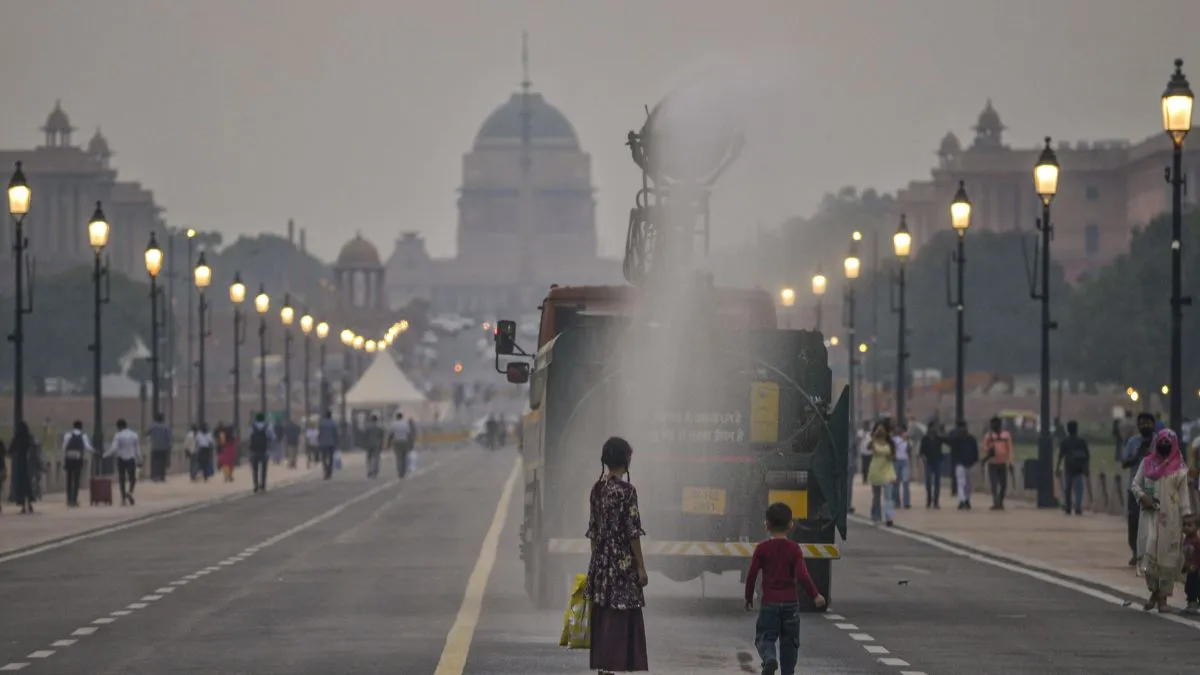- By Priyanka Koul
- Wed, 29 Oct 2025 08:59 AM (IST)
- Source:JND
Delhi Air Pollution: Despite attempts to tackle Delhi’s severe air pollution through an artificial rain experiment conducted on Tuesday, the city’s Air Quality Index (AQI) readings on Wednesday morning remained largely within the ‘very poor’ and ‘poor’ categories across most areas. The Graded Response Action Plan (GRAP) Stage II measures are already in force.
At 8 a.m. on Wednesday, Delhi recorded an average AQI of 306 in the ‘very poor’ category, a slight rise from Tuesday’s reading of 294, which fell within the ‘poor’ category according to the Central Pollution Control Board (CPCB), despite the cloud seeding operation.
The Delhi government, in collaboration with IIT-Kanpur, carried out the trials in several areas, including Burari, North Karol Bagh, Mayur Vihar, and Badli, with further operations planned in the coming days, Environment Minister Manjinder Singh Sirsa said.
In a report released later in the evening, the government stated that the cloud seeding trials had led to a reduction in particulate matter at the test sites, even though weather conditions were not ideal.
The government added that the India Meteorological Department (IMD) and other agencies had predicted low moisture levels of 10–15 per cent, which are not considered favourable for cloud seeding. However, IMD data showed that no rainfall was recorded in Delhi until late evening.
According to the CPCB, the AQI in RK Puram (south-west Delhi) remained ‘very poor’ at 308 as of 7 a.m. on Wednesday. The AQI at Anand Vihar was similarly ‘very poor’ at 307.
Ashok Vihar recorded an AQI of 302, followed by Bawana at 322, both in the ‘very poor’ range. The AQI in Dwarka Sector 8 stood at 298 (classified as ‘poor’), while ITO recorded 306 and Nehru Nagar 294, both within the ‘poor’ category.
Around Akshardham, the AQI was 307, also classed as ‘very poor’.
At India Gate, the CPCB recorded an AQI of 282, in the ‘poor’ category, as residents lamented the health effects of worsening air pollution.
A truck-mounted water sprinkler was deployed at Lodhi Road, where the AQI reached 226, also in the ‘poor’ range, according to the CPCB.
According to AQI monitoring service aqi.in, Noida recorded an AQI of 310 as of 7:30 a.m. on Wednesday, while Greater Noida registered a slightly lower reading of 289.
Wazirpur once again recorded the worst air quality, with an Environmental Weather Station (EWS) reading of 327 early on Wednesday.
Check AQI Level Across Delhi-NCR
| Area | AQI |
| Wazirpur | 327 |
| Sirifort | 326 |
| Bawana | 320 |
| Rohini | 320 |
| Mundka | 315 |
| Vivek Vihar | 309 |
| R K Puram | 308 |
| Anand Vihar | 307 |
| ITO | 307 |
| Dwarka Sector – 8 | 302 |
| Sonia Vihar | 301 |
| Punjabi Bagh | 298 |
| Pusa | 297 |
| Nehru Nagar | 296 |
| Patparganj | 294 |
| Jahangirpuri | 293 |
| Jawaharlal Nehru Stadium | 290 |
| Najafgarh | 289 |
| Burari Crossing | 283 |
| Major Dhyan Chand National Stadium | 282 |
Environmentalists have warned that cloud seeding is an expensive and short-term measure that fails to address the root causes of air pollution. They point out that the main contributors vehicle emissions, industrial smoke, stubble burning, and dust remain unaddressed. “It’s a costly, temporary fix, not a real solution,” they say.
The AQI reading is categorised as Good (0-50), Satisfactory (51-100), Moderately Polluted (101-200), Poor (201-300), Very Poor (301-400), and Severe (401-500). Higher the AQI reading, the unhealthier it is to breathe.
The Commission for Air Quality Management (CAQM) on Tuesday announced that all commercial goods vehicles registered outside Delhi and not compliant with BS-VI emission standards will be prohibited from entering the city from November 1.
( With PTI Inputs )

